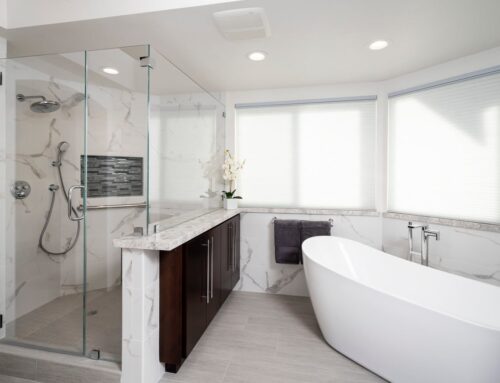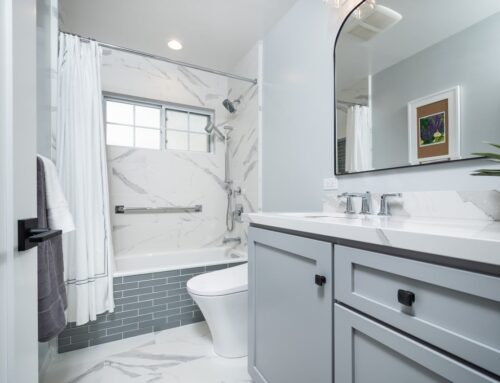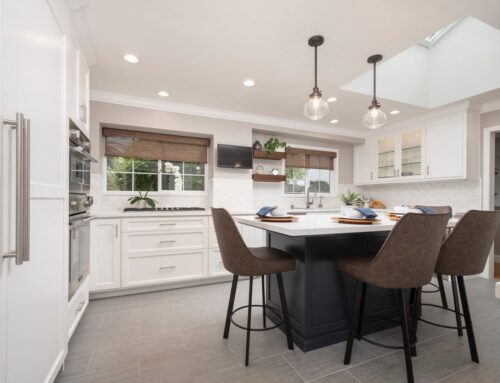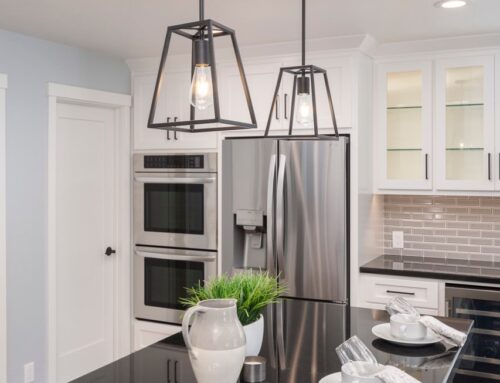 Bathroom remodels are one of my specialties, and by far the most common questions clients ask me are “How long will this take?” and “What should I expect during the remodeling process?” To help clients understand the process, I’ve created this sample timeline. When everyone is on the same page, the remodel process goes much more smoothly. Whether you are undertaking the project yourself, or hiring a general contractor, here is an idea of what the process will look like. A typical bathroom remodel takes 4-6 weeks.
Bathroom remodels are one of my specialties, and by far the most common questions clients ask me are “How long will this take?” and “What should I expect during the remodeling process?” To help clients understand the process, I’ve created this sample timeline. When everyone is on the same page, the remodel process goes much more smoothly. Whether you are undertaking the project yourself, or hiring a general contractor, here is an idea of what the process will look like. A typical bathroom remodel takes 4-6 weeks.
- Design bathroom and select materials—you should spend a good amount of time on this step. Take your time to shop for materials and see the myriad options available to you. Peruse photos on Houzz.com and collect ideas of designs that appeal to you. It’s at this step that a professional designer can be the most helpful. A designer can help narrow down your options, and design a space that fits your taste and lifestyle. A general contractor needs to know what kind of bath you want, so the more detailed your design plan is, the more accurate his price quotation will be.
- Obtain permits. After you have your design created, take your drawings to the city to obtain any necessary building permits. The homeowner or the contractor can take care of this step. The city will want to know the type of plumbing and lighting you are using—there are strict codes regarding water flow and energy efficiency. There will be periodic inspections during the remodel process.
 Purchase plumbing fixtures and have them onsite. The contractor will need the plumbing rough valves and bathtub very early in the construction process. The whole process runs much more smoothly if you have all of the materials onsite before you start the demolition.
Purchase plumbing fixtures and have them onsite. The contractor will need the plumbing rough valves and bathtub very early in the construction process. The whole process runs much more smoothly if you have all of the materials onsite before you start the demolition.- Order cabinetry. Custom cabinetry takes anywhere from 4-8 weeks, and even ready-made modular cabinetry can take 2 weeks or longer. The contractor will need the cabinetry approximately 2 weeks into the process.
- Start demolition. Please don’t demolish your bathroom before you have a plan in place and materials ordered!
- Frame walls—Are any walls being moved or removed? Are you building a pony wall? Will the existing tub or shower get larger or smaller? Will you be installing grab bars? These areas need to framed and prepped. The cabinet-maker may want to come and take final field measurements after new walls are constructed, especially if cabinets need to fit into tight spaces.
- Install the rough plumbing. The contractor will install the tub, drains and bath/shower valves at this step.
- Install the rough electrical wiring. The contractor will run all of the wiring for any new lighting and vent fans at this point.
- Install sheetrock, tape and texture. After all of the “rough” construction, then the new wallboard can go up and be prepped for paint.
- Paint walls and ceiling. Most contractors like to paint before any of the finish materials go in. Painters are aware that they will need to come back at the end for any touch ups needed after the finish materials are installed.
- Install base cabinetry. After the walls are painted, then the vanity can be installed.
- Create a template for the countertop. If you are installing quartz or granite, the installers will come to measure and create a template after the vanity is installed. There is a lead-time of approximately ten days between the template date and final installation.
- Install tile in the shower, tub, walls and floor. If you are installing a tile backsplash, this cannot be completed until the counters are installed.
- Measure for bath/shower enclosure and custom mirrors. The enclosure cannot be ordered until the tile is complete. There is typically about a 10-day lead-time for these items.
- Install countertop. After the 10-day lead-time, the counters can finally be installed. Now you can schedule the backsplash installation.
- Install final plumbing and light fixtures. After all of the tile work and countertop work is complete, then the contractor can install the bath/shower fixtures, faucets and decorative light fixtures.
- Install bath/shower enclosure and mirrors. Now your bath is almost done!
- Install cabinet doors and hardware. Many times, the contractor will wait till the end to install these items—this reduces the chance of damage to the cabinetry while other items are getting installed.
- Install towel bars, tissue holder, robe hooks and other accessories.
- Call painter back for final paint touchups.
- Add finishing touches—window treatments, artwork, towels.
- Bathroom complete! Although it always seems like it takes forever, a few weeks of inconvenience will result in years of enjoyment.




